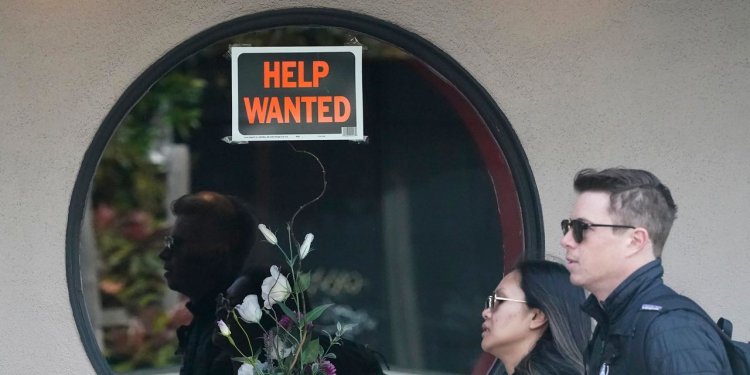Help Still Wanted: Fewer Job Openings Won’t Faze the Fed
Fed policy makers have been arguing that a drop in the number of job vacancies could effectively cool off the job market. Photo: Jeff Chiu/Associated Press By Justin Lahart May 2, 2023 12:52 pm ET There was a big debate among economists and U.S. policy makers last year over whether job openings could come down without tanking the job market. Well, job openings are down and the job market is still strong, but the debate is hardly resolved. Newsletter Sign-Up Markets P.M. Agenda-setting analysis and commentary on the biggest corporate and market stories from our Heard on the Street team. Subscribe Now


Fed policy makers have been arguing that a drop in the number of job vacancies could effectively cool off the job market.
Photo: Jeff Chiu/Associated Press
There was a big debate among economists and U.S. policy makers last year over whether job openings could come down without tanking the job market. Well, job openings are down and the job market is still strong, but the debate is hardly resolved.
Newsletter Sign-Up
Markets P.M.
Agenda-setting analysis and commentary on the biggest corporate and market stories from our Heard on the Street team.
Subscribe NowThe Labor Department on Tuesday reported that there were 9.59 million unfilled jobs in the U.S. at the end of March, down from 9.974 million at the end of February, and 20% below the record 12.027 million logged in March of last year. Data on job openings from the Labor Department and, before December 2000, from a series constructed by Federal Reserve Bank of San Francisco economist Regis Barnichon that goes back to 1951, shows that there has never been a decline of 20% or more in job openings without a substantial increase in the unemployment rate.
Until now, that is. The unemployment rate in March was 3.5%, matching the level it held in March last year and just a hair above its multidecade low.
On the face of it, this is good news for the Federal Reserve, which will decide on rates on Wednesday. Policy makers there have been arguing that a drop in the number of job vacancies could effectively cool off the job market, reducing wage pressures without a commensurate jump in unemployment. Tuesday’s report suggests that this process might be under way.
Other economists—most notably former Treasury Secretary Lawrence Summers —have argued that the Fed’s view is Pollyannaish. In a series of research notes last year, he and economists Alex Domash and Olivier Blanchard dismissed the idea that job vacancies could normalize “without a major increase in unemployment.”

Job openings are down, but they don’t look anything close to what might have been called normal. In March, there were 1.6 jobs for each person counted as unemployed. That was down from the peak job-to-unemployed ratio of 2 hit last year. Before the pandemic, though, the only time it was higher was briefly in 1953. That ratio will probably need to come down to something closer to 1, which would still be high by historical standards, for the Fed to stop worrying that the job market was running too hot.
It is possible to envision something like that happening, with workers who took on jobs that experienced heavy demand following the pandemic, such as working in warehouses and making food deliveries, returning to the kinds of work they used to do. Experience suggests that sort of shift won’t happen—that people who stop working in one field can’t easily find work in another—but maybe in this case many might retain the skill sets that they need.
Ignoring history is foolish, but the pandemic changed things. We aren’t in Kansas anymore and haven’t been for more than three years now.
Write to Justin Lahart at [email protected]
What's Your Reaction?

















